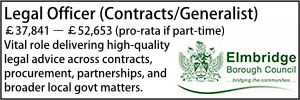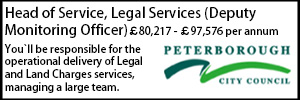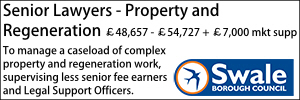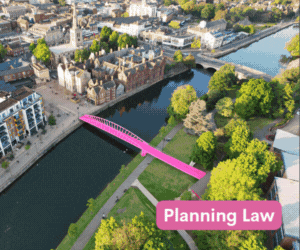Personal circumstances, public safety, and the planning balance
- Details
Arevik Jackson provides some reflections on recent co-joined enforcement appeals and the grant of temporary planning permissions.
In a recent set of co-joined planning enforcement appeals [1], a number of personal temporary planning permissions were granted to families from the Gypsy and Traveller community, following their challenges to enforcement notices issued by Cheshire East Council. The appellants also secured a partial award of costs against the Council.
The breach of planning control identified in the enforcement notices concerned the unauthorised change of use of land from agricultural to residential caravan sites, along with associated development.
Each pitch was located in open countryside, either on or close to two high-pressure natural gas pipelines (Feeder 21 Elworth to Mickle Trafford and Warburton to Audley).
Both the Health and Safety Executive (‘HSE’) and National Gas Transmission (‘NGT’) objected to the appeals and attended the inquiry to give oral evidence.
The HSE has Inner, Middle, and Outer Zones around the pipelines to manage the risks associated with potential failure and the release of flammable gas. If ignited, such a release could result in a large fireball and a subsequent jet fire. Notably, all four pitches fell within the Inner Zone.
In relation to the HSE risk, the Inspector stated:
‘46. The pressure and design of the pipelines, along with the nature of natural gas, means that if either pipeline fails, it could lead to a catastrophic release of gas. If ignited, HSE confirm that it would burn as a large fire ball and a subsequent jet fire. The former would likely cover 300 metres from the point of failure, the latter 100 to 150 metres from the point of failure. The risk of failure is low, and thus the risk to people is low but not negligible.’
NGT’s objection centred on the contention that the development hindered access to the pipelines for maintenance. The appellants challenged this position, arguing that both NGT and the Council had erred in asserting such an impediment. The Inspector agreed:
‘49. The gas pipelines are of an age, susceptible to corrosion and need maintaining. As explained, the pitches subject of Appeals C and E do not affect the easements associated with the gas pipelines. Hence, these developments do not prevent NGT from accessing the pipelines to inspect, maintain and repair them. In respect of Appeals A and B, an easement covers part of each pitch. Both pitches are enclosed by tall fencing. The land subject of Appeal A is grassed to the rear where the easement lies. Hardstanding covers the area where the easement is for Appeal B. However, a planning condition for a site development scheme could secure a suitable internal layout of each site, including the location of any structures and details of proposed boundary treatment. This could ensure that these pitches do not conflict with the easement, and thus, affect NGT’s ability to inspect, maintain or repair.’
Despite finding no maintenance-related conflict, the Inspector drew a distinction between NGT’s position and the separate public safety concerns raised by the HSE:
‘50. Although subject to a planning condition there is no NGT maintenance issue, and while each appellant may accept the risk and consequences if a failure were to occur, that does not lessen or overcome the unsafe location of each development or the safety of each occupier on the pitches concerned, which include vulnerable people. If a failure did occur, there could be fatal consequences for the occupiers of each pitch. I have carefully considered HSE’s advice in reaching this view.
51. As a result, given their proximity and number, I conclude in respect of this issue, that the location of each proposal gives rise to an unacceptable safety risk to the occupiers in conflict with SADPD Policy INF 7(2), notwithstanding that the schemes do not give rise to a maintenance issue.’
It is of note that the appellants did not seek to challenge the substance of the HSE’s risk assessment. Their case was framed around accepting the HSE’s advice and arguing that, in the circumstances, the exceptional personal and medical circumstances should outweigh the identified harm.
The appellants gave evidence on oath at the inquiry and were cross-examined. The Inspector engaged in a detailed and sensitive assessment of personal and medical circumstances, including the best interests of children.
On ground (a), the Inspector found that there would be unacceptable safety risks associated with the sites’ Inner Zone location, which carried very substantial weight.
The Inspector found that the said risk would persist for the entire duration of any occupation.
It was also found that the lack of a five-year supply of deliverable Gypsy and Traveller sites triggered the tilted balance under paragraph 11(d) of the NPPF. The Inspector observed:
‘88. Each appellant and their family’s have a genuine need for a pitch, and there are no alternatives presently available to them in Cheshire East. For Appeals B and C, the personal circumstances of the family and the best interests of the children, along with the lack of a five-year supply of deliverable Gypsy and Traveller sites, carry significant weight in favour of the proposal. For Appeals A and E, the personal circumstances of the family and the best interests of the children, along with the lack of a five-year supply of deliverable Gypsy and Traveller sites, carry very significant weight in favour of the proposal. That said, in each case, those objectives could be realised at a site in a different location that complies with planning policies. The development plan would enable that, subject to the site- specific considerations, and the Council contends that the EN’s compliance periods would facilitate consideration of an alternative site.
89. Each site’s location carries neutral weight, as does the effective use of land given the size of the pitch and its location in the Inner Zone. The character and appearance harm means that there is conflict with Framework paragraphs 135 a), b), c) and d) and 139. Hence, none of the pitches are well-designed places. The proposal conflicts with Framework paragraph 102 for the reasons set out relating to the gas pipelines. Furthermore, the IUD carries moderate negative weight.’
In line with the appellants’ overarching position, whilst the Inspector declined to grant full planning permissions, he rightly drew a distinction between the balancing exercise applicable to permanent permissions versus temporary ones, acknowledging that the harms in the latter case would be time limited.
In determining the appropriate period – the Inspector considered the specific circumstances of the appellants:
‘91. The identified harms would remain in respect of a three-to-four year temporary permission, especially if one or both gas pipelines were to fail given the likely grave consequences, albeit they would be time-limited. The compliance period stipulated on the EN is already tantamount to a temporary planning permission and would avoid an immediate roadside existence. However, in this case, I consider the specific circumstances of the appellant’s stepson justify a longer time period of two years, despite the continued safety consequences, to enable the appellant and his family to find an alternative policy compliant site whilst at the same time providing the individual, and thus, his family, a stable and settled base. In this time, the Council owned site should become available, and a longer period would prolong the safety consequences of remaining on this pitch, which would not be in anyone’s interests, but especially not the children’s.
92. I therefore conclude that the adverse impacts of granting a temporary personal planning permission would not significantly and demonstrably outweigh the benefits when assessed against the policies in the Framework taken as a whole. Thus, the material considerations collectively (even setting aside the IUD not caused by the children) indicate that I should take a decision on Appeal A other than in accordance with the development plan. I will therefore grant temporary personal planning permission for a two-year period which would strike a proportionate balance…’
Overall, the decision underlines the importance of engaging with the reality of personal circumstances on the ground and recognising the difference in analysis in relation to temporary planning permissions.
As to costs, the appellants advanced both procedural and substantive grounds, ultimately securing a partial award.
The decision reinforces the importance of a need for a robust on-the-ground investigation by local planning authorities. It serves as a practical reminder—that proper record-keeping of investigatory steps is vital.
The decision also underscores that as between the parties, in relation to the matters alleged to have been known by the appellants – the duty remained with the authority – to investigate the matters in issue properly.
Lastly, the case highlights the need for effective cooperation between parties and the value of reflecting on whether a planning condition might render a proposed development acceptable. Where it does, failure to recognise the same may well expose authorities to the risk of a costs application.
Arevik Jackson is a barrister at Kings Chambers.
[1] APP/R0660/C/24/3354264; APP/R0660/C/24/3354267; APP/R0660/C/24/3354270; APP/R0660/C/24/3354258; APP/R0660/W/24/3354285
Lawyer - Property
Trust Solicitor (Employment & Contract Law)
Contracts & Procurement Lawyer
Senior Lawyer - Contracts & Commercial
Senior Lawyer - Contracts & Commercial
Locums
Poll






































